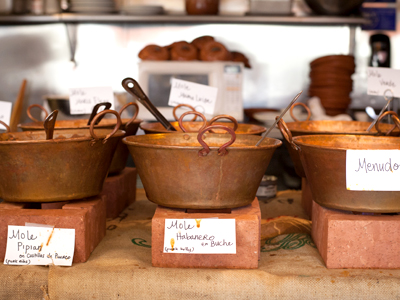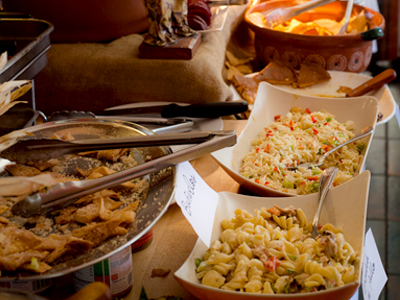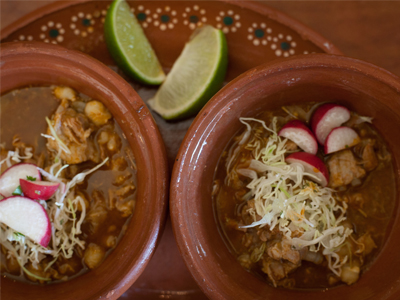
A meet and eat with East Bay chef Lito Saldaña ---
Walk into Los Moles restaurant on Sunday morning and you’ll find six shades of moles simmering in copper pots, pozole and menudo steaming in clay cazuelas, pinto and black beans, orange and green rice, crispy carnitas, and sugar-coated warm churros. Behind the buffet in the kitchen, cooks prepare classic Mexican egg dishes, whisk Mexican hot chocolate, and press balls of masa into fresh corn tortillas. If a village in Jalisco hosted an all-you-can-eat brunch, I’m pretty sure it would look something like this.
Los Moles is the new version of Emeryville restaurant Cocina Poblana, and Chef Lito Saldaña is putting his passion for mole front and center. Mole, originating from the Nahuatl word for sauce, is possibly Mexico’s most treasured and most misunderstood dish — the sauce combines new and old-world ingredients, and has hundreds of variations, most of which never make it to restaurants in America. At Saldaña’s brunch (a steal at $15 per person), customers can try up to six moles, all made by the chef himself. I talked with Saldaña, who’s won numerous awards for his moles, about cooking and the art behind making mole.
 What’s the idea behind the Sunday brunch?
What’s the idea behind the Sunday brunch? “The idea is to replicate what you see in small towns all over Mexico - clay and copper pots stewing with authentic, handmade, delicious food. We have pozole and menudo, which is fairly traditional on Sundays, and also all the moles on the menu so people can taste each one and order their favorite next time they come in for dinner.”
So you have six different kind of moles - can you tell us about them?
“Everyone makes a different mole - in Mexico you can walk down a block and each neighbor will make a different mole with different ingredients. Our mole verde has fresh chile poblano, spinach, cilantro, pumpkin seeds, and walnuts. The Mama Luisa is named after my mother - it’s a mole rojo, and fairly light. Mama Elena is our mole negro - it’s my grandma’s recipe, with chile negro, almond, sesame seeds, and a lot of other ingredients. Mole poblano is known as the original mole, and it has seven different types of chiles, plus chocolate and cinnamon— this one takes the longest to make. My favorite is the the pipian, which is 90% pumpkin seeds, with a little peanuts and chile guajillo. It’s very rich and very few people know about it. We also have a Habanero mole - the spiciness of the pepper is tamed by the red bell pepper, tomatoes, and tomatillos.”
How long does it take to make a mole?
 “I make mole twice a week, and I think it tastes better after three days because all the ingredients meld together. When I make moles I make it in 50 gallons and I start by cutting all fresh ingredients, so I spend between six to eight hours. When I make moles I don’t do anything else, not even pick up the phone. Why? Because moles are delicate - you burn one chile and it can change the taste of the whole sauce.”
“I make mole twice a week, and I think it tastes better after three days because all the ingredients meld together. When I make moles I make it in 50 gallons and I start by cutting all fresh ingredients, so I spend between six to eight hours. When I make moles I don’t do anything else, not even pick up the phone. Why? Because moles are delicate - you burn one chile and it can change the taste of the whole sauce.” Where did you learn to cook?
“When I was in Mexico I didn’t even know how to make a tortilla. When I came to the U.S. I started cooking. Most of the recipes are my own, but I’m always thinking about how my mom, grandma and aunt’s food tasted. I was very young when my grandmother passed away, but I can still taste her food.”
My talk with chef Lito was interesting and informative, and it certainly made me eager to try his food. The Pipian mole, carnitas, and the pinto beans with corn, were the dishes I enjoyed the most. Savoring their authentic taste, it was not hard to believe that Lito’s grandma would be proud of how he is keeping the mole tradition alive.

